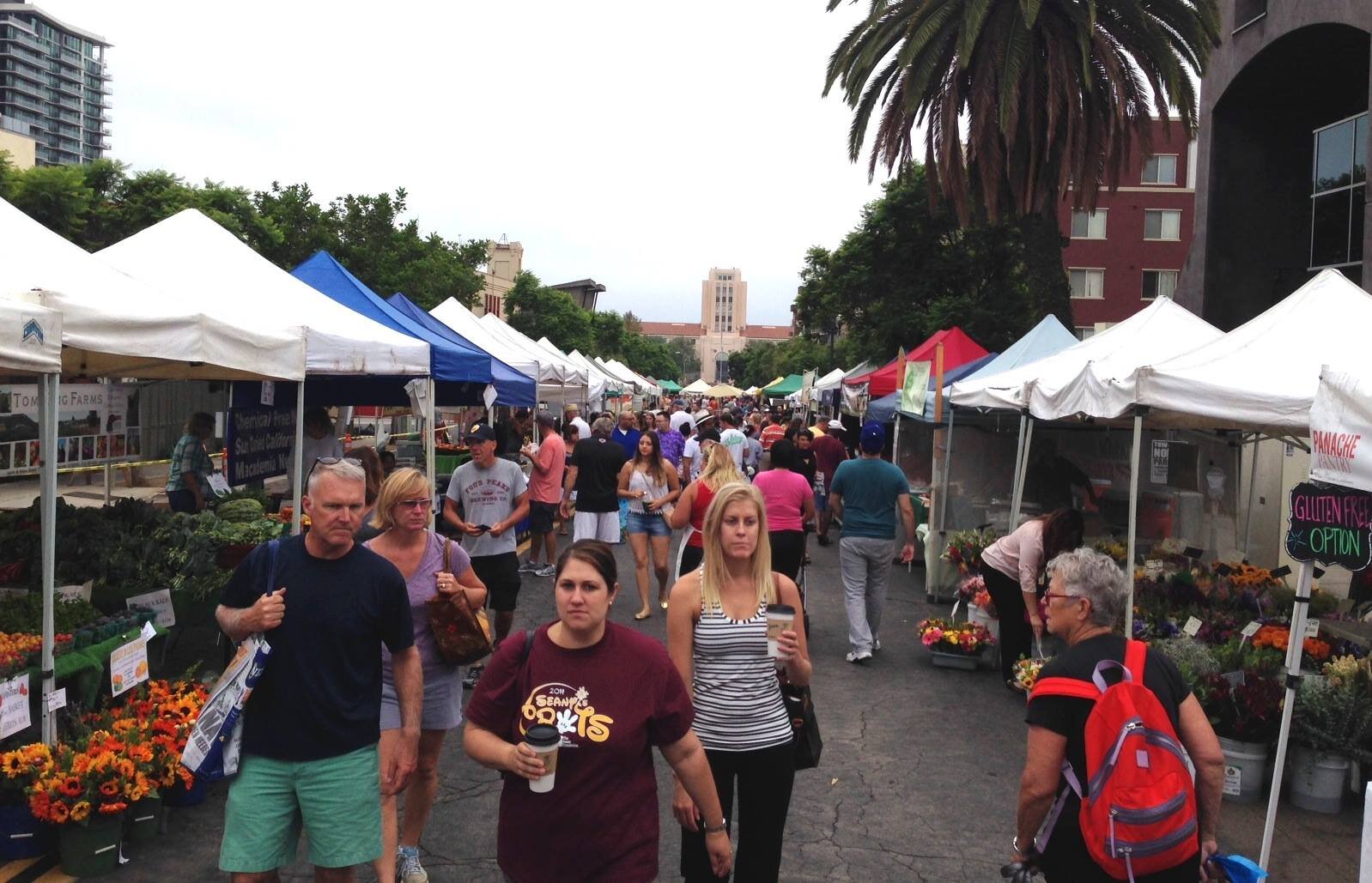How to Move a Market
What happens when the perfect location changes?
Finding the perfect location for a farmers’ market is one of the most critical predictors of success. To flourish, a market needs to be located in a central, visible, and easily accessible setting. Ideally, farmers’ markets are positioned on the main drag of your targeted neighborhood. Neighboring businesses and surrounding residences are obvious factors, but the list goes on and on. Adequate square footage, level ground, and nearby parking are just the tip of the iceberg.
So what happens when you’ve found that sweet spot, established a thriving market, and then you’re required to move the whole market? Cue muffled sobs.
Choosing a new location for a well-established, large market is a unique predicament. This situation is much different than deciding whether to move an underperforming market to a site with more space or better visibility, or analyzing where to start a brand new market. The San Diego Markets team’s experience moving the Little Italy Mercato was the ultimate farmers’ market manager Rubic’s cube game.
Location, Location, Location
In 2008 the Little Italy Mercato Farmers’ Market popped their first tents in a steadily redeveloping neighborhood near downtown San Diego. The new market started with a handful of farmers and vendors on a block and a half of a street with a gorgeous view of the bay. Customer counts grew slowly but surely those first years, and more farmers and vendors joined.
Over time, the Little Italy community experienced dynamic growth and so did the market. Eventually the market filled almost six city blocks with nearly 200 tents every Saturday year-round, making it San Diego County’s largest farmers’ market and an important fundraiser for the neighborhood.
Movin’ on up
Six years after the Little Italy Mercato opened, a local developer and the Little Italy Association proposed an ambitious construction project. The plan included converting a whole city-block into a pedestrian-only piazza between two new multi-story, high-end apartment buildings. The piazza would feature bistro tables, umbrellas and planters scattered throughout a cobblestoned space surrounding an enormous fountain. And it would be built smack dab in the center of the farmers’ market’s footprint!
The good news was the powers that be were sure that the busy, carefully curated weekly Mercato would add to the piazza’s ambience. The bad news? We had to find a new home for the market for an estimated 16 months, until the project was complete.
New location, new challenges
Intent on staying in the same immediate area, we found just two possible sites. We ruled out streets that would shorten the market by blocks or that had too steep a slope. Streets that were too far from the center of the Little Italy community or with too many residential driveways to navigate were also crossed off the list. Then, midway through city permitting, our first choice was nixed. The adjacent homeowners drew the line at coping with the annual art festival. They balked at the idea of dealing with crowds on their doorsteps on a weekly basis. So that left us with one choice: Cedar Street.
The new location we settled on was only a block south of our established market. Although it was just one block over, there were various logistical differences. On the new street, one block was inaccessible due to a trolley stop, but five blocks were usable. Of those five blocks, the top block was wider and longer than on our original street. There were far more condos on this new street. This required that fire lanes coexist with driveways that couldn’t be blocked (for what promised to be an extended construction period). The barricades count increased exponentially.
Some business owners welcomed our crowds of shoppers to their street; others literally screamed that we’d be crowding out their regular customers. Likewise, some neighbors who enjoyed walking a block over to the market every Saturday found farmers unloading trucks at 6 am outside their doors less appealing. But with ongoing outreach, and some creativity in map-making, our vendor space count ultimately remained exactly the same.
Managing vendors’ expectations
Soothing the neighbors was nothing, though, compared to dealing with farmers and vendors who felt unhappy and uprooted from the squares of pavement that they’d come to consider their own. Think about how your average vendor hates to move ten feet, then kick that up a few hundred notches.
An entirely lateral move was impossible to accomplish due to changes in street widths and other variables. However, we strived to keep as many participants as possible in roughly the same positions on the equivalent blocks of the new street. When this wasn’t practical, we relocated vendors in (what we dubbed) “pods.” Pods are pairs or small groups of farmers and vendors with established working relationships and synchronistic products (i.e. bread baker and olive oil vendor, or tomato farmer and pasta vendor). Moving vendors in pods allowed them to land in their new locations while still surrounded by their market friends.
Of course, there was still wailing and moaning. Their new locations had too much slant, or a nearby business “spoiled the vibe”, or the trolley’s beep-beep drowned out conversation with their customers. Plenty of vendors were sure the shoppers would never find us. We listened, and took their concerns to heart, but that just didn’t turn out to be true. Our shoppers not only followed us, they brought new friends.
Attention shoppers!
Part of the prep work to adjust to our new street was informing the public. We ran print ads, upped our social media game, and had fun with our promotional materials. We handed out cow stickers that said “Ask me about the Mercato moooove” to our shoppers. For our farmers and vendors we printed t-shirts that said “Cedar Soon!” identifying our new street name. We invited local newscasters and they came out in droves to cover the big shift.
It took a few weeks to get in the groove, but over time our vendors and loyal customers came to love market life on Cedar Street. The new location offered big shade trees that bloomed purple each spring. The trolley stop at the end of the street eased some parking challenges for guests. And a great grass-fed burger shop on the corner beckoned when employees tired of market lunches. In the end our hard work paid off and the market move was a success.
And again, more changes…
We were having so much fun at our new location that time flew by! Sixteen months stretched to two years, then three, and we almost didn’t mind at all. In fact, nearly four years later we finally got the word that it was time to move back to our original street. But this time, with a whole new layout to accommodate the piazza, the fountain and new buildings.
Almost four years had passed since the Little Italy Mercato’s first move. When the time came to move back, the market had gained new vendors who weren’t around at the original location. Likewise, some original vendors couldn’t remember the details of our first move! So as expected, there was grumbling about the news of another location shift. The response was hilariously predictable: “that street is too sloped.” “I can’t change locations.” “Our customers will never find us if we move!”
Will they find us?! Stay tuned for future episodes of As the Market Moves.



